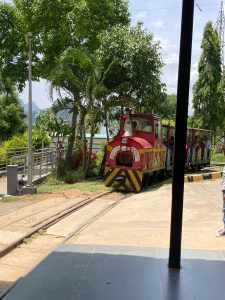It was summer vacation time and we wanted to explore a new destination. Research was done at different levels and finally the destination was decided: Bangalore and Chikmagalur. Bags packed, essentials taken care of and off we went to the IT/Garden City of India.
We were visiting our cousins in Bangalore for the first time and I must acknowledge that I have hardly met such a warm family! Glad we could also catch up with our friends. We tried out various eateries, cafes, and home cooked south Indian food. My favorite I would say was ‘Donne Biryani’ and the prawns cooked at home. When in Bangalore, Koshy’s at MG Road is a must visit. We also visited the HAL, Heritage Centre & Aerospace Museum and walked around Cubbon Park, located in the heart of the city.


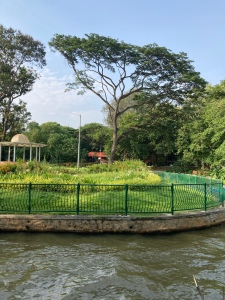
After a three-day stay at Bangalore we drove off to Chikmagalur, the land of coffee! We were mesmerized by the scenic view on the way, beautiful lakes after short intervals, windmills on the hill-tops, greenery, and the smooth roads. We stopped at quite a few locations to appreciate the beauty. Bangalore to Chikmagalur is a six-hour drive when driving at leisure. And one can take detours to visit the temples in Belur and Halebidu. We decided to visit the Belur, Chennakeshava Temple.

Belur was the early capital of the Hoysala Empire in the 11th century, before they built Dorasamudra (modern Halebid). According to various read outs, in the inscriptions discovered here, Belur was called Beluhur, Velur or Velapura during the Hoysala era. And the temple is supposed to be last of the great Hoysala temples located near Yagachi River in Karnataka. It is a major tributary of Hemavathi River. It rises in the Baba Budan Hill Range near the city of Chikmagalur and flows through the Belur taluk, Hassan District. The temple was supposedly built over three generations and took 103 years to finish!




After appreciating the craftsmanship at the Chennakeshava temple we started our journey to our home stay which was away from the town. It’s a coffee estate which had a few sections built into cottages and a coffee shop. ‘Halli Berri’ staff were a polite lot and always trying to help. The home cooked food was delicious and easy on the stomach. We got a coffee plantation walk where we were informed about the stages of coffee-making and we could walk through the area to experience the green. There was a nursery too, where the coffee buds were grown until they could be planted across the estate.



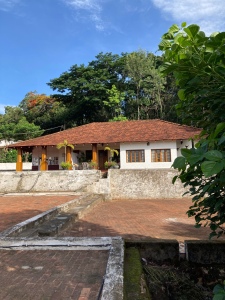
Hebbe falls was on our list and we had to visit it. The drive to the Bhadra wildlife sanctuary where Hebbe falls was located was smooth. After reaching the gate we had to hop on to the local jeep. Though the ride till Hebbe fall was quite bumpy, the scenic view made it worth the while. The hill plantation along the way was a lighter shade of green and it was soothing to the eyes. We had to walk one kilometer to reach the falls, and we were enchanted by the first view of the gigantic fall. The sun shining on the water was a view that can make anybody’s heart dance.


Another precious gem we found was the Belavadi Veera Narayana Temple. Belavadi is a village, located at a distance of 29 km from Chikmagalur town and about 12 km from Halebidu, Karnataka, India. The place is described as Ekachakranagara of Mahabharata. As the folklore goes, Belavadi was where Bheem killed the demon Bakasura and protected the village and its people. One has to actually see it to believe its beauty. There are three forms of Vishnu in three different sections. This thousand-year old temples is less visited and is preserved by the ASI (Bangalore circle). A must-visit according to me!

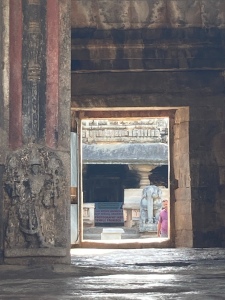
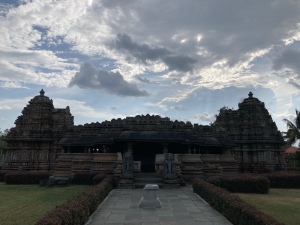
On the way back we visited the Ayyanakere Lake, which is considered to be the second largest lake of Karnataka. We had a difficult time locating the exact view point. Finally found an entry point and the view was amazing.


Another place that I would recommend is the Shettihalli Rosary Church which was quite close to Hassan (30 mins). We decided to visit it on our way back to Bangalore. The road to the Church was not very good in some places but again the view was something else. We were awestruck when we first got the view of the church. The church is a masterpiece in many ways. It’s built on the banks of Hemavathi River in Shettihalli village of Hassan district. It is purported to have been constructed in 1860 by a French missionary named Abbe J. A. Dubois. In 1960, the Gorur-Hemavathi dam was constructed over the river which uprooted all villages surrounding the area of the church. Since then, every year during peak monsoon the land floods with water and submerges the church. Despite this, the church still stands, with only about one-third of its structure above the water’s surface. Over the years, it has acquired names like ‘Floating Church’ and ‘Submerged Church’. The church is a magnificent structure of Gothic Architecture.


Overall the trip was wonderful as it was a mix of meeting friends, family and discovering some gems. It’s up to your stamina to make it busier or just breathe in the greens!
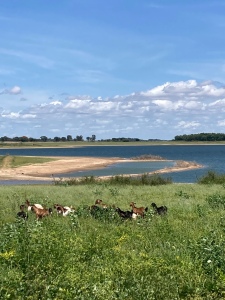
Some SuddyMoody suggestions/facts – the Hoysala era was an important period in the development of South Indian art, architecture, and religion. The empire is remembered today primarily for Hoysala architecture; 100 surviving temples are scattered across Karnataka. You can explore the MG Park at Chikmagalur if you are traveling with kids, the toy train ride was super fun; if you are a real coffee lover and interested in its history visit the Coffee Museum at MG Road; go prepared according to the season and enjoy the hospitality in the coffee land of Karnataka!
